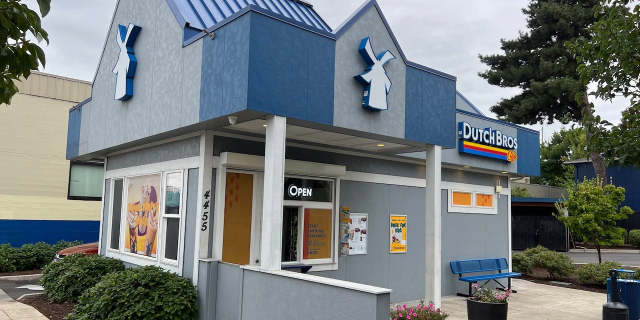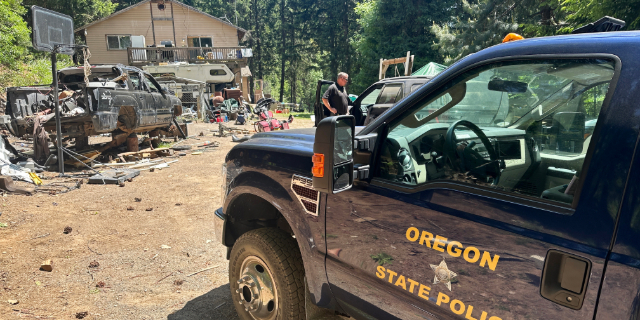FROM THE EDITOR: Newspaper people came to town
Published 4:00 pm Monday, February 6, 2023

- David Smigelski
“For me it’s like going back home,” I told Gerry O’Brien, the editor of The Bend Bulletin, who was interviewing me about being hired by EO Media Group to help build the newsroom and hire the staff of the Rogue Valley Tribune.
EO Media Group, which owns the Bulletin, Capital Press, The Astorian and several other papers in Oregon, mobilized as soon as the Mail Tribune closed down on Friday the 13th.
EO Media Group has been family owned for four generations. They are true newspaper people with great reputations in the industry.
The Medford area is home to roughly 250,000 people. That’s too big of an area to go without a newspaper, they said. People need news. Their immediate focus on the needs of the community took me back to my roots.
When I started at the Mail Tribune 16 years ago, the paper was part of Ottaway Newspapers, a family-owned company with several newspapers scattered around the country.
By the time I came on board, Ottaway was part of Dow Jones, the company that owned the Wall Street Journal, but the Ottaways were still involved with the operation and we considered ourselves part of the family.
For a little while.
That was before we became pawns in a multinational media chess game that led me last week to a dusty mezzanine inside the historic JC Penney building in downtown Medford.
But I digress.
In my first year at the Mail Tribune, Dow Jones sent a bunch of guys in suits from New York to take a stronger hand in our operations. They were fast talkers with big ideas about how to grow newspaper profits.
Among their initiatives was a plan to launch a series of magazines, websites and feature sections in the paper. The talk was about building audience, delivering a larger market to advertisers by having more places to sell ads.
They didn’t say much about news or serving the community. They didn’t offer tools or training to improve our news-gathering efforts. But they sure could talk about money.
A couple of years later, Rupert Murdoch, one of the biggest media moguls on the planet, decided he wanted to own the Wall Street Journal. He landed his prize, of course, but it came with a catch. He also had to buy the former Ottaway papers, now known as the Local Media Group of Murdoch’s sprawling News Corp.
The first thing he did was put us and the other LNG papers up for sale. But the timing was bad. The Great Recession of 2008 had begun and nobody was buying newspapers. So, they took us off the market, and we got to be run by the people who owned 20th Century Fox and a bunch of British tabloids.
We felt queasy some days as we read international wire stories about phone-hacking scandals and other political activities around the globe by our owners, but for the most part they left us alone — other than laying off employees and selling off our property.
There was a stretch where they announced layoffs every quarter for something like 12 straight quarters. They sold off the Ashland Daily Tidings building and the Tidings staff moved to Medford or began working from their homes. “Do more with less,” was the mantra.
After wringing us as dry as the Agate Desert in August, News Corp sold us in 2013 to Gatehouse, the largest owner of newspapers in the U.S.
When Gatehouse came to town, they told us, “We know you can’t do more with less. So, we’re going to do less with less.”
How do you do that? Economies of scale. Leveraging. Lay off the people who lay out the pages. Build the Medford paper in a design center in Texas that does the layout for 100 other papers or more.
Lay off the people who answer the phones in Medford and farm the work out to India. Stuff like that. We bled people.
But we published listicles. They loved listicles — “10 places to spend New Year’s,” “5 ways to lose weight,” “7 movies to see this month.”
They had quotas for how many we had to publish every fiscal quarter. If we jumped through all of their hoops and checked all the boxes on their plan, we got a certificate saying we were in the Gatehouse “Inner Circle.”
After four years of that, we were sold to an owner from the East Coast who said newspapers weren’t just dying, they were already dead and just didn’t know it yet. He believed the future was news videos set to music.
“That’s what millennials want,” he said many times.
Millennials seemed not to agree, and the experiment unraveled. The Ashland Tidings was the first to go down.
Then the printed paper ceased last September. And the Mail Tribune was abruptly closed Jan. 13, with just two days’ notice to employees.
Ten days later I was standing inside the JC Penney building in Medford with Bulletin publisher Heidi Wright, figuring out where to put desks and phones. As we planned, she used words I could understand.
“We know newspapers aren’t a cash cow, but we’re not here to get rich,” she said. “We want to do this because it’s important.”
I wanted to hug her, but I thought it might be unprofessional. Crying was probably poor form, as well, but I couldn’t stop a little mist from building up.
After 16 years I feel like I’m back home. With newspaper people. Family people.
Reach Rogue Valley Tribune editor David Smigelski at dsmigelski@rvtrib.com.






